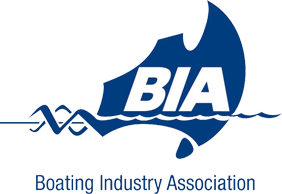An Overview About Boat Rigging Systems
05 November 2020Boat rigging systems are primarily comprised of components that can effectively support the masts of a sailing ship or a sailboat and modify the position of the vessel’s sails and spars. These systems essentially ensure that the ship or the boat is already ready for proper use. Marine technicians who are onboard the ships or boats must know the basics of the boat rigging systems to make sure everything will work optimally.
Understanding your Yachts Rigging
A yachts rigging refers to the ropes, cables, chains and other systems used to control and support a mast and sails. Rigging has two categories; standing rigging and running rigging. The standing rigging on a yacht refers to the wires, cables or stays that hold and support the mast in staying in an upright ridged position, while sailing or not. The standing rigging is under constant load holding the mast upright on all four sides of the mast; Forward (Front), Sides (Port and Starboard – Left and Right) and Aft (Back). The front stays are known as the forestay, inner forestay or a baby stay. The side stays are known as Cap shrouds, Lower shrouds, and varies diagonal or vertical shrouds (D1, D2, D3… or V1, V2, V3 and so on) depending on their location, height and whether the mast has continuous or dis-continuous rigging (this refers to the stays either stopping and starting at the spreader ends or continuing through and terminating on the deck). The Aft stays are call Backstays, which can come in a large number of variations depending on the design of each individual yacht.
The running rigging of a yacht refers to the cordages used to control the shape and position of the sails. Halyards are used to raise and lower sails up and down the mast, as well as controlling luff tension. The sail shape is then controlled by lines from the corners of the sails including; outhauls, reefs, downhauls and sheets. Different types of rope have varying cost, strength, wear and stretch characteristics, which are suited to specific roles. For example, running rigging that sees high loads must not be stretchy and must be strong enough to withstand the high loads to enable the yacht to sail at optimal speed and efficiency. These high strength and low stretch lines obviously come at a higher cost than low strength / high stretch lines, because better quality materials are used.
Rigging Inspections are Important
All the components attributed to the boat rigging systems must be inspected ahead of time. Thorough inspections and maintenance for the whole rigging system can be good for the well-being of ships and boats. The wires and rods of the ships and boats must be checked for loose strands, breaks, and end fittings. The location where other components meet the other rigging must also be assessed periodically. Likewise, fittings and components that have significant damages must be replaced right away. After all, rigging systems are constantly exposed to heavy load and stress in a highly corrosive environment.
For more information about boat rigging system inspections, feel free to contact us at Riggtech. We ensure that all standing rigging components are changed from top pin to bottom pin when replacing the standing rigging. This guarantees the absence of a weak link, and you can sail with peace of mind and confidence.
Optimized by: Netwizard SEO


